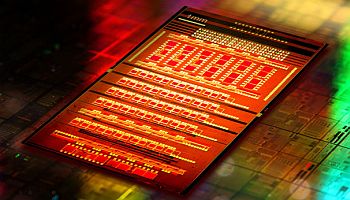IBM Casts Light On Its Photonics Research Project

IBM has shown how it can integrate the key elements of a system connected by light rather than by electrical charge
IBM has been showcasing its photonics achievements in Japan. At the Semicon Japan conference, the company showed how light will carry processor signals in the future much faster than electricity can.
Photonics is seen as the future of signal transfers because of the speeds that can be achieved. IBM, Intel and several other chip manufacturers are currently developing photonic-based systems.
Exascale Computer Building Blocks
 The CMOS Integrated Silicon Nanophotonics (CISN) technology is IBM’s research project which is starting to take shape as a viable proposition. The company sees CISN as the building block for future ‘exascale’ supercomputers that will execute a million, trillion operations per second. That will be 1,000-times faster than today’s ‘petascale’ supercomputers.
The CMOS Integrated Silicon Nanophotonics (CISN) technology is IBM’s research project which is starting to take shape as a viable proposition. The company sees CISN as the building block for future ‘exascale’ supercomputers that will execute a million, trillion operations per second. That will be 1,000-times faster than today’s ‘petascale’ supercomputers.
“The CMOS silicon nanophotonics technology we have developed at IBM can meet the requirements for exascale systems by scaling up per-chip transceiver bandwidth and integration density,” said Will Green, an IBM researcher involved with the CISN project.
The principal of the signal carrying abilities of photonics is analogous with the way fibre optic networks operate using light pulses to represent digital bits rather than electrical charges. Apart from the speed achievable, the use of light will allow the systems to run cooler than current computers.
At some point, electrical signals have to be converted to light, be transmitted and then converted back to electrical charges again. IBM is currently licensing partners to produce commercial transceivers that will convert electrical signals into light pulses and back again.
After experimenting with nanotube techniques, IBM has discovered how to use traditional silicon emitter technology to produce the laser light to carry the signals. This means that all of the components of the system can now be assembled on a single silicon chip and manufacturing methods are now being developed for the commercialisation of the CISN technology.
Having solved the basic challenges, IBM has predicted that CISN will soon be able to move from connecting between complete systems to connecting boards within the same system. The next step would be to link between chips on a single board. By 2016, the company claims it will be able to connect the cores on a single chip and produce a photonic microprocessor.